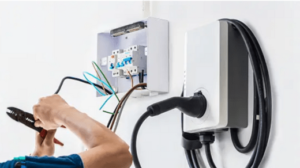how to bypass battery saver relay
Bypassing a battery saver relay involves altering or bypassing the relay to maintain power in certain electrical systems or devices even when the relay is engaged to save battery power. However, it’s important to note that bypassing a battery saver relay may result in increased battery drain and potential electrical issues. If you still wish to proceed, here are general steps to bypass a battery saver relay:
Disclaimer:
- Modifying electrical components can be dangerous and may cause damage or harm. Ensure you have the necessary skills and understanding of electrical systems before attempting any modifications.
- It’s advisable to consult with a professional or an automotive electrician for guidance and assistance.
Steps:
- Identify the Battery Saver Relay:
- Locate the battery saver relay in your vehicle. It is usually found in the fuse box or electrical control module.
- Understand the Wiring:
- Study the wiring diagram for the battery saver relay to understand its connections and how it interacts with the electrical system.
- Disconnect the Battery:
- Prior to any work, disconnect the vehicle’s battery to ensure safety during the modification process.
- Examine the Relay Connections:
- Identify the input and output terminals of the relay. The input is usually connected to the battery or ignition source, and the output goes to the devices or systems being controlled.
- Determine the Bypass Strategy:
- Decide how you want to bypass the relay. One common method is to directly connect the input and output terminals, effectively bypassing the relay’s control.
- Connect Input and Output Terminals:
- Depending on your chosen method, connect the input and output terminals using appropriate wiring, connectors, or a jumper wire.
- Secure the Connection:
- Ensure the connection is secure and properly insulated to prevent electrical issues or short circuits.
- Reconnect the Battery:
- After securely connecting the terminals, reconnect the vehicle’s battery.
- Test the Electrical System:
- Test the affected electrical systems or devices to verify if they receive continuous power, bypassing the battery saver relay.
- Monitor Performance:
- Monitor the vehicle’s performance and battery drain to ensure there are no adverse effects due to the bypassed relay.
- Regular Checks and Maintenance:
- Periodically check the modifications to ensure they are functioning correctly and not causing any problems.
Again, exercise caution and consider seeking professional assistance if you are unsure about modifying electrical components in your vehicle. Safety and proper functioning of the vehicle’s electrical systems should always be a top priority.








